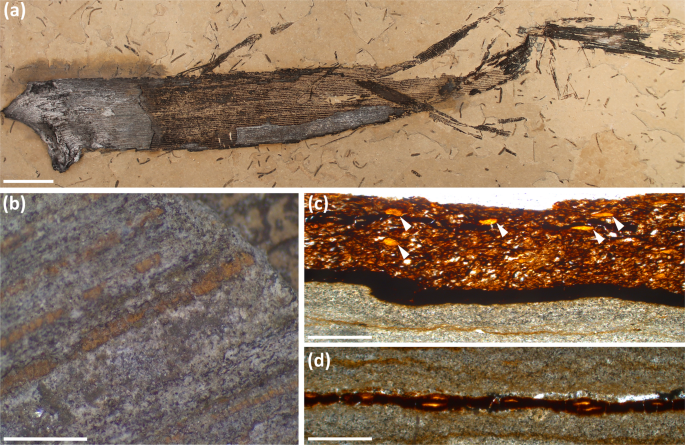
Langenheim, J. H. Plant Resins: Chemistry, Evolution, Ecology, and Ethnobotany. Timber Press, Portland, Cambridge (2003).
Langenheim, J. H. Higher plant terpenoids: a phytocentric overview of their ecological roles. Journal of Chemical Ecology 20, 1223–1280 (1994).
BeMiller, J. N. Plant gums. Essential for Life Science John Wiley and Sons Ltd, Chichester 1–6 (2014).
Lambert, J. B., Heckenbach, E. A., Wu, Y. & Santiago-Blay, J. A. Characterization of plant exudates by principal-component and cluster analyses with nuclear magnetic resonance variables. Journal of Natural Products 72, 1028–1035 (2010).
Henwood, A. Recent plant resins and the taphonomy of organisms in amber: a review. Modern Geology 19, 35–59 (1993).
Langenheim, J. H. Biology of amber-producing trees: focus on case studies of Hymenaea and Agathis. In: Anderson, K. B. & Crelling, J. C. (Eds.), Amber, Resinite and Fossil Resin. American Chemical Society, Washington D. C., 1–31 (1995).
Lambert, J. B., Santiago-Blay, J. A. & Anderson, K. B. Chemical signatures of fossilized resins and recent plant exudates. Angewandte Chemie International Edition 47, 9608–9616 (2008).
Simoneit, B. R. T., Otto, A. & Wilde, V. Novel phenolic biomarker triterpenoids of fossil laticifers in Eocene brown coal from Geiseltal, Germany. Organic Geochemistry 34, 121–129 (2003).
Mahlberg, P. G., Field, D. W. & Frye, J. S. Fossil Laticifers from Eocene Brown Coal Deposits of the Geiseltal. American Journal of Botany 71, 1192–1200 (1984).
Bray, P. S. & Anderson, K. B. Identification of Carboniferous (320 million years old) class 1c amber. Science 326(Issue 5949), 132–134 (2009).
Batten, D. J. Spores and pollen from the Crato Formation: biostratigraphic and palaeoenvironmental implications. In: Martill, D. M., Bechly, G. & Loveridge, R. F. (Eds.), The Crato Fossil Beds of Brazil–Window into an Ancient World. Cambridge University Press, Cambridge, 566–573 (2007).
Martill, D. M., Bechly, G. & Loveridge, R. The Crato Fossil Beds of Brazil–Window into an Ancient World. Cambridge University Press, Cambridge (2007).
Barling, N., Martill, D. M., Heads, S. W. & Gallien, F. High fidelity preservation of fossil insects from the Crato Formation (Lower Cretaceous) of Brazil. Cretaceous Research 52, 605–622 (2015).
Varejão, F. G. et al. Exceptional preservation of soft tissues by microbial entombment: insights into the taphonomy of the Crato Konservat-Lagerstätte. Palaios 34, 331–348 (2019).
Osés, G. L. et al. Deciphering the preservation of fossil insects: a case study from the Crato Member, Early Cretaceous of Brazil. PeerJ 4, e2756 (2016).
Osés, G. L. et al. Deciphering pyritization-kerogenization gradient for soft-tissue preservation fish. Scientific Reports 7, 1468 (2017).
Dias, J. J. & Carvalho, I. S. Remarkable fossil crickets preservation from Crato Formation (Aptian, Araripe Basin), Lagerstätten from Brazil. Journal of South American Earth Sciences 98, 102443 (2019).
Martill, D. M., Loveridge, R. F. L., Andrade, J. A. F. G. & Cardoso, A. H. An unusual occurrence of amber in laminated limestones: the Crato Formation lagerstätte (Early Cretaceous) of Brazil. Palaeontology 48, 1399–1408 (2005).
Pereira, R., Carvalho, Id. S., Simoneit, B. R. T. & Azevedo, D. A. Molecular composition and chemosystematic aspects of Cretaceous amber from the Amazonas, Araripe and Recôncavo basins, Brazil. Organic Geochemistry 40, 863–875 (2009).
Batista, M. E. P. et al. New data on the stem and leaf anatomy of two conifers from the Lower Cretaceous of the Araripe Basin, northeastern Brazil, and their taxonomic and paleoecological implications. PLOS One 12, 1–18 (2017).
Dilcher, D. L., Bernardes de Oliveira, M. E., Pons, D. & Lott, T. A. Welwitschiaceae from the Lower Cretaceous of Northeastern Brazil. American Journal of Botany 92, 1294–1310 (2005).
Crane, P. R. The fossil history of the Gnetales. International Journal of Plant Science 157, 50–57 (1996).
Crane, P. R. & Lidgard, S. H. Cretaceous patterns of palynological diversity and the angiosperm radiation. In: Taylor, P. D & Larwood, G. P. (Eds), Major Evolutionary Radiations. Oxford University Press, UK, 377–407 (1990).
Rodin, R. J. Leaf anatomy of Welwitschia. II. A study of mature leaves. American Journal of Botany 45, 96–103 (1958).
Sykes, M. G. V. The anatomy and morphology of the leaves and inflorescences of Welwitschia mirabilis. Philosophical Transactions of the Royal Society B 201, 179–22 (1911).
Tappert, R., Wolfe, A. P., McKellar, R. C., Tappert, M. C. & Muehlenbachs, K. Characterizing modern and fossil gymnosperm exudates using micro-Fourier transform infrared spectroscopy. International Journal of Plant Science 172, 120–138 (2011).
Seyfullah, L. J., Sadowski, E. M. & Schmidt, A. R. Species-level determination of closely related araucarian resins using FTIR spectroscopy and its implications for the provenance for New Zealand amber. PeerJ 3, e1067 (2015).
Vajda, V. et al. Molecular signatures of fossil leaves provide unexpected new evidence for extinct plant relationships. Nature Ecology and Evolution 1, 1093–1099 (2017).
Venkaiah, K. Development, Ultrastructure and Secretion of Gum Ducts in Lannea coromandelica (Houtt.) Merrill (Anacardiaceae). Annals of Botany 69, 449–457 (1992).
Fahn, A. Secretory tissues in plants. Academic Press (1979).
Source: Ecology - nature.com



